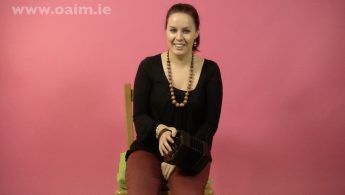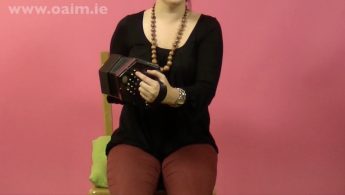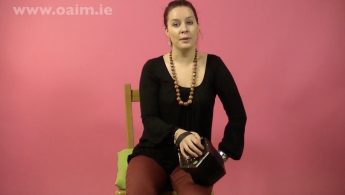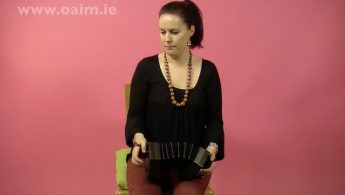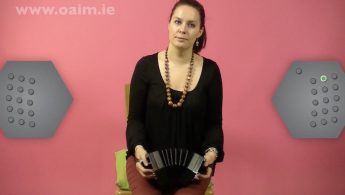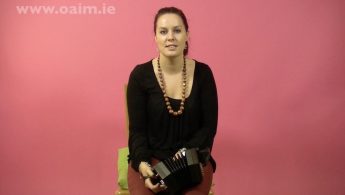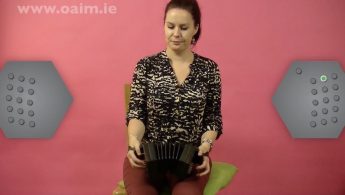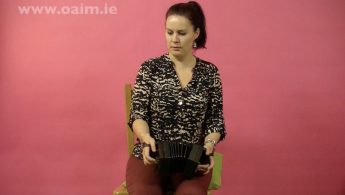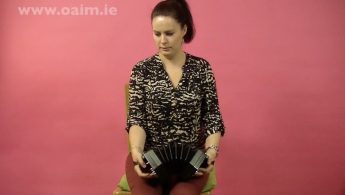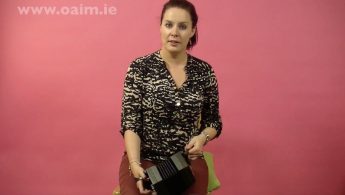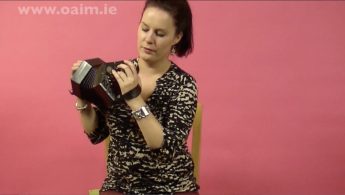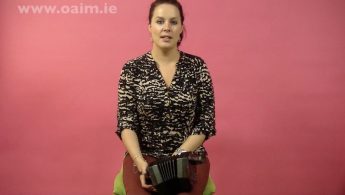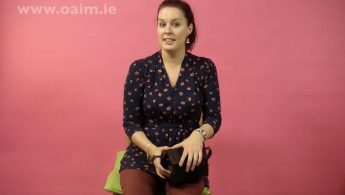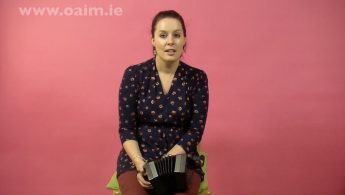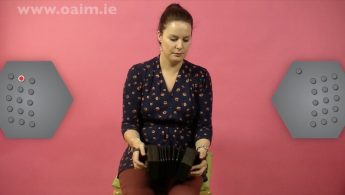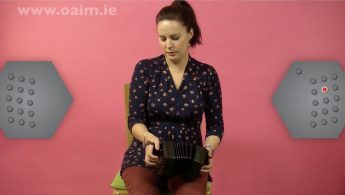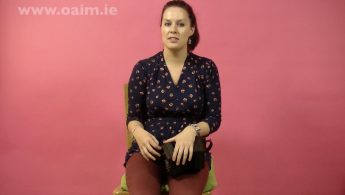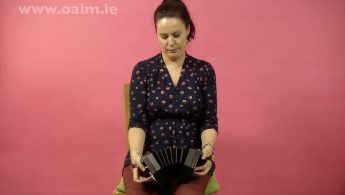- 18 lessons teaching how to play 17 very popular Irish tunes.
- Progress at your own pace, pause & repeat videos.
- Access on all your devices.
- PDF sheet music & mp3’s to download & keep for each tune.
- 14-day free trial. Cancel anytime.
- Access to 14 instruments, 40+ courses, 700+ tutorials
Start Your Free Trial
BONUS:
- Access our Entire Course Catalogue for Every Instrument.
- Library of over 150 popular Irish tunes to practice along with.
- Virtual Reality Sessions for the unique Irish Pub Session experience – a real treat for the Irish music lover.
- Community Forum of students and teachers, all friends with a love of Irish music.
The anglo concertina is arguably one of the most robust melodic characters of traditional Irish Music. A close relative of the accordion, the concertina is a reed instrument, that requires a combination of pressing buttons and gentle movement of the hands to create the bellows effect that sounds the notes. This squeezing motion led to the common nickname of the instrument as the ‘squeeze box’. This course is aimed at the absolute beginner concertina player.
By the end of this beginners’ course, you will have a repertoire of seventeen popular Irish tunes, the ability to play cuts, rolls, chords and octaves and a deeper understanding of the Irish music tradition. The course has 18 lessons, broken into 3 to 4 tutorials each, where tunes are taught phrase by phrase.
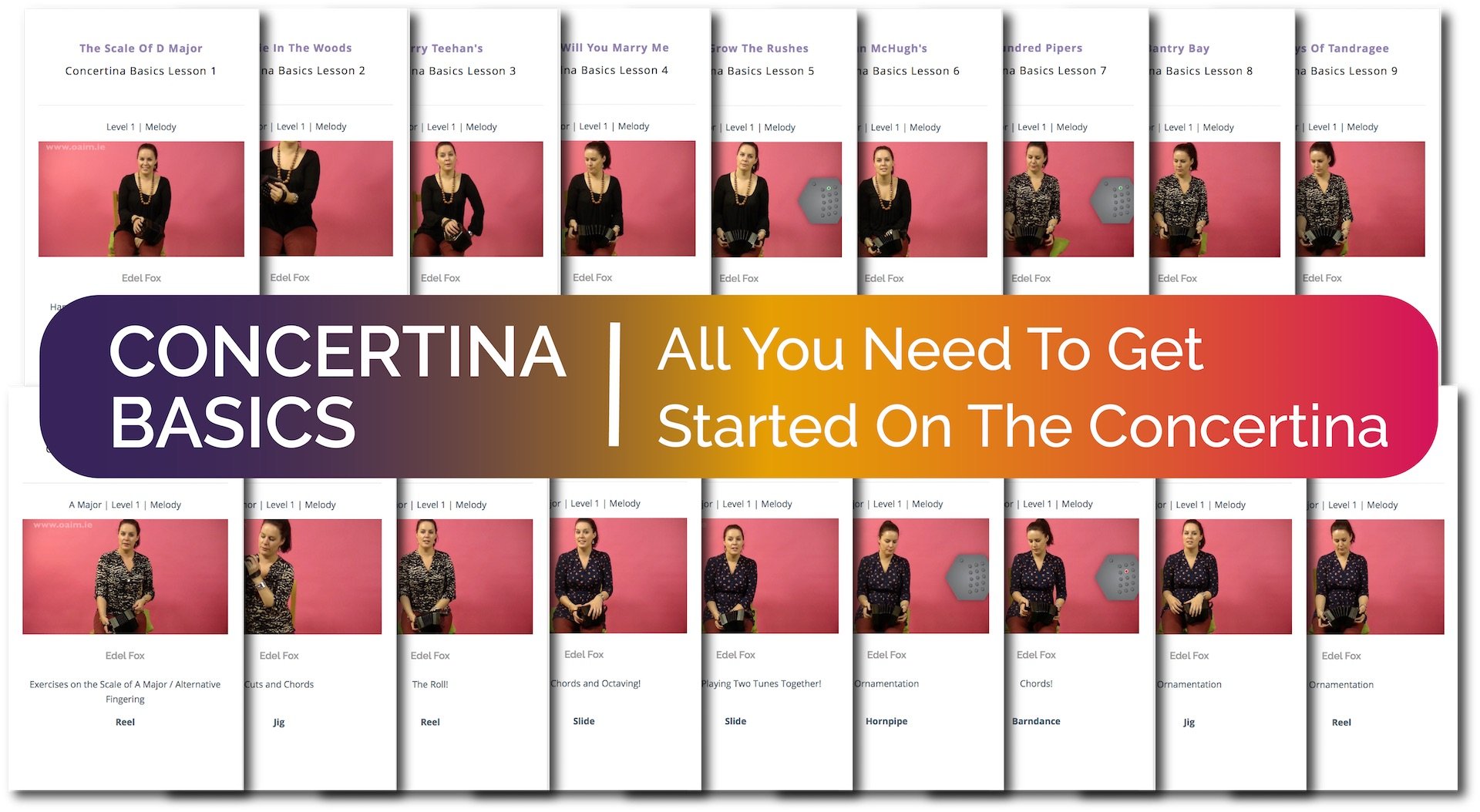
Start Your Free Trial
Course Structure
This course is designed to equip the beginner with all the techniques necessary to play Irish music on the concertina. How to hold the instrument, proper hand/finger posture, the use of the air button and alternate fingering are all important skills that are addressed in the early lessons. There is a progressive study of scales, ornamentation, use of chords and octave playing throughout the eighteen lessons.
The course also comes with accompanying animated diagrams. When the tutor is teaching each tune slowly, phrase by phrase, there are graphic inserts of each side of the concertina on the video, with highlighted buttons showing where to press and when to push or pull adding to the ease of learning.
The traditional Irish tunes taught in this course are:
Maggie In The Woods
Terry Teehan’s
Johnny Will You Marry Me
Green Grow The Rushes
John McHugh’s
A Hundred Pipers
Bantry Bay
The Boys Of Tandragee
The Maid Of Feakle
The Feakle Jig
Sporting Paddy
The Carrigkerry Slide
Con Cassidy’s
An Spealadoir
Joe Banes Barndance
Dan The Cobbler
Tomeen O’Dea’s
Recommended Concertina for Beginners
The 30 button C/G Anglo Concertina is used in Irish music. Brands such as Wren, Lachenal or Barleycorn are recommended for beginners. The tutor in this course plays a Jeffries.
Start Your Free Trial
Advice Starting Out with the Concertina
Enjoy the journey. Don’t progress to the next lesson until the current lesson is mastered. Lesson sequence is progressive and designed in such a way to develop your skill step by step. Remember these are video tutorials, so rewind, repeat, stop and rest to suit your pace of learning. Everyone learns at a different speed, the important thing to keep in mind is that the more relaxed you are about learning, the more you will absorb the instruction, that’s why we at OAIM always focus on enjoying the practice and playing of music.
Particularly with Irish music, it is highly recommended to be familiar with the tune you are learning before you begin learning how to play it. For that reason we recommend downloading the accompanying mp3 file for each lesson and listen to it frequently first before beginning the corresponding tutorial on it.
Your Tutor
 Edel Fox
Edel Fox is a concertina player from Miltown Malbay, Co. Clare. She began playing at the age of 7 and was fortunate to be brought up in an area and environment where traditional music was in abundance. Edel learnt much of her music from concertina players Noel Hill, Dymphna O’Sullivan, Tim Collins and Tony O’Connell as well as local musicians such as Pete Haugh, Michael Mahoney and Peadar Crotty. Over the years, Edel’s playing has been hugely influenced by the music and recordings of Willie Clancy, Bobby Casey, Junior Crehan and Mrs. Crotty, to name but a few. Edel spent much of her teenage years playing with, and learning from Jackie Daly, who she cites as one of her influences. In 2004, Edel was awarded the TG4 Gradam Ceoltóir Óg na Bliana (Young Musician of the Year).
Read more.
Frequently Asked Questions
INSTRUMENT
What is the difference between Anglo (Anglo-German) and English concertinas?
An Anglo concertina is most commonly used for playing Irish music. An English concertina is most commonly used in English folk music. An Anglo concertina has different notes on push and pull. On the English concertina, every button has just one note (same on push and pull). The Anglo concertina has hand straps, the English concertina has thumb straps. An Anglo Concertina is fully chromatic only within a certain range, an English concertina is fully chromatic.
What type of concertina should I buy to play Irish music?
For Irish music, the most commonly used concertina is a C/G Anglo concertina.
How many buttons should the concertina have?
30 button concertinas are the best (Three rows on each side – C, G and accidentals row). 20 button concertinas are fine for a while but are more restrictive in that they can’t play in any keys other than C, G and their relative minors.
What brand of concertinas are best for a beginner?
Good beginner concertinas include brands such as Stagi, Bastari, Wren, Honer and some other unbranded models.
What is the price range for a beginner or intermediate concertina?
As a very rough estimate, a new beginner concertina will cost between €300 and €800. An intermediate concertina will cost between €1800 and €3000.
Where should I purchase a concertina?
You can purchase a concertina from a music shop, a maker, a dealer or second hand. Intermediate and advanced concertinas tend to hold their value while beginner instruments depreciate in value initially, but a secondhand or even thirdhand instrument is often fine for starting on if it’s in good condition.
What is the difference between a concertina with concertina reeds and one with accordion reeds?
Accordion reeded instruments are cheaper but the instrument will sound like an accordion rather than a concertina.
What is the difference between wooden and metal ended concertinas?
A wooden ended concertina will sound more mellow and sweet, a metal ended concertina will sound a little louder and brighter in tone.
LEARNING
How should I hold my concertina?
When initially holding your concertina, put your two hands in the straps and make sure they’re nice and tight – not cutting off your circulation tight, just so that the instrument feels like an extension of your arm. Sitting on a chair with a straight back and feet firmly on the ground, thighs parallel to the floor, hold the instrument out directly in front of you, lower the instrument onto your two knees, then tilt the concertina slightly so that the left wooden end of the instrument sits behind the kneecap of your left leg – the squishy bit. This is where your concertina will be anchored, the other side does all the movement. This technique achieves good posture and ensures that you don’t damage your concertina.
I have a pain when I practice, what should I do?
Something is wrong here. Most likely your posture. If you experience pain anywhere when practising, stop immediately. Make sure your body is physically relaxed while practising, breathe LOADS. Try to avoid sudden jolts when playing, move smoothly and slowly when pressing buttons and changing bellows direction.
Should I learn scales?
Scales are excellent for developing proficiency on any instrument.
I know I should practice but I don’t know what to practice.
A good idea is to divide up your practice into three segments giving a certain amount of time to each eg. A forty-minute practice slot could be divided into 10, 20 and 10-minute segments.
10 min (a piece of technique such as a new ornament or a scale)
20 min (a new tune you are working on)
10 min (some tunes you can play with a degree of proficiency, ones which you enjoy playing)
This approach will enable you to spend some time actively improving your technique and your repertoire but also remembering to have fun, as they say, “All work and no play makes Jack a dull boy”.
Plus, don’t forget our Play-Along Practice App!!
What are the advantages of online learning vs pottering away by yourself?
Apart from providing guidance on concertina technique and offering insight into the culture of the music, online lessons offer goal-centred learning. Learning tune by tune until you build up a significant repertoire is very satisfying and keeps learning challenging and fun. Learning as part of a community allows you to share your successes with others of a similar standard and interests. Ploughing away on your own, you can very often get bogged down in technicalities. With online learning, you can also take things at your own pace while remaining motivated, disciplined and inspired.
What is the advantage of learning by ear?
Learning by ear is the most natural way to learn music. Although it can be challenging at the very start. It’s possible for everyone with a little practice and it’s totally worth it. It makes sense that you should learn music through your ears rather than your eyes right? Your eventual aim is to be able to sit down, listen to a tune and after a while, you’ll be able to playback the tune regardless of whether you’re sitting in front of your CD player or in a session.
Is there anything I should make sure not to do when playing concertina?
Don’t move your fingers up and down the buttons like you would with an accordion. Keep the fingers centred on the first three notes in the middle row on each side (the home keys) – just like when you’re typing on a computer.
OTHER QUESTIONS
Most of the tunes I play are in G and D. Why don’t I just buy a G/D Concertina?
In the concertina world, C/G instrument is considered to be the standard. The three rows on a C/G instrument will allow you to play in every key within a wide range by cross fingering. Almost every player plays concert pitch music on a C/G instrument. If you buy an instrument in any other key and attempt to learn Irish repertoire in the standard keys you may succeed but your journey will be much longer and more laborious than it need be. You won’t have the same access to teachers, tutorial manuals or any other learning aids. Also, choosing an instrument in a different key will move notes commonly used in Irish music from the middle of your instrument (top section of buttons on the left and right) to the bottom section of buttons (which are difficult to reach as they fall under your baby fingers rather than your first, second and third fingers). It gets rather confusing at this point… just don’t do it!
What is the difference between an accordion, concertina and squeezebox?
An accordion and a concertina are different instruments. An accordion is generally bigger than a concertina, it is rectangular and has melody on one side and basses or chords on the other. There are many different types of accordions. A concertina is smaller, has hexagonal ends and has only melody buttons on each side. A squeezebox isn’t actually an instrument. It’s a colloquial name for any instrument with bellows and buttons.
What’s the difference between the two sides of the concertina?
In terms of layout of the three row C/G concertina, there is an inside row, a middle row and an outside row. The middle row is C, the inside row is G and the outside row which was added at a later date contains all the accidental notes which don’t occur in the keys of C or G. The rows can be imagined a little like three harmonicas sitting beside each other. Generally speaking, playing push, pull from the bottom left upwards towards the bottom right of the instrument will give you ascending notes.
I can play slowly but I want to be able to play fast, what am I doing wrong?
Short answer, you’re not doing anything wrong from the point of view of technique. You’re just trying to run before you can walk. Try not to aim for speed, aim for beautiful mellow playing with good technique. Your music will gradually increase in speed as you become more capable on your instrument. Trying to play faster than you are able can develop bad habits which you will end up trying to undo later on.
Detailed questions and discussion on the course can be found in the Community Forum, available to paying members only.
Start Your Free Trial

 Edel Fox is a concertina player from Miltown Malbay, Co. Clare. She began playing at the age of 7 and was fortunate to be brought up in an area and environment where traditional music was in abundance. Edel learnt much of her music from concertina players Noel Hill, Dymphna O’Sullivan, Tim Collins and Tony O’Connell as well as local musicians such as Pete Haugh, Michael Mahoney and Peadar Crotty. Over the years, Edel’s playing has been hugely influenced by the music and recordings of Willie Clancy, Bobby Casey, Junior Crehan and Mrs. Crotty, to name but a few. Edel spent much of her teenage years playing with, and learning from Jackie Daly, who she cites as one of her influences. In 2004, Edel was awarded the TG4 Gradam Ceoltóir Óg na Bliana (Young Musician of the Year). Read more.
Edel Fox is a concertina player from Miltown Malbay, Co. Clare. She began playing at the age of 7 and was fortunate to be brought up in an area and environment where traditional music was in abundance. Edel learnt much of her music from concertina players Noel Hill, Dymphna O’Sullivan, Tim Collins and Tony O’Connell as well as local musicians such as Pete Haugh, Michael Mahoney and Peadar Crotty. Over the years, Edel’s playing has been hugely influenced by the music and recordings of Willie Clancy, Bobby Casey, Junior Crehan and Mrs. Crotty, to name but a few. Edel spent much of her teenage years playing with, and learning from Jackie Daly, who she cites as one of her influences. In 2004, Edel was awarded the TG4 Gradam Ceoltóir Óg na Bliana (Young Musician of the Year). Read more.